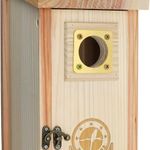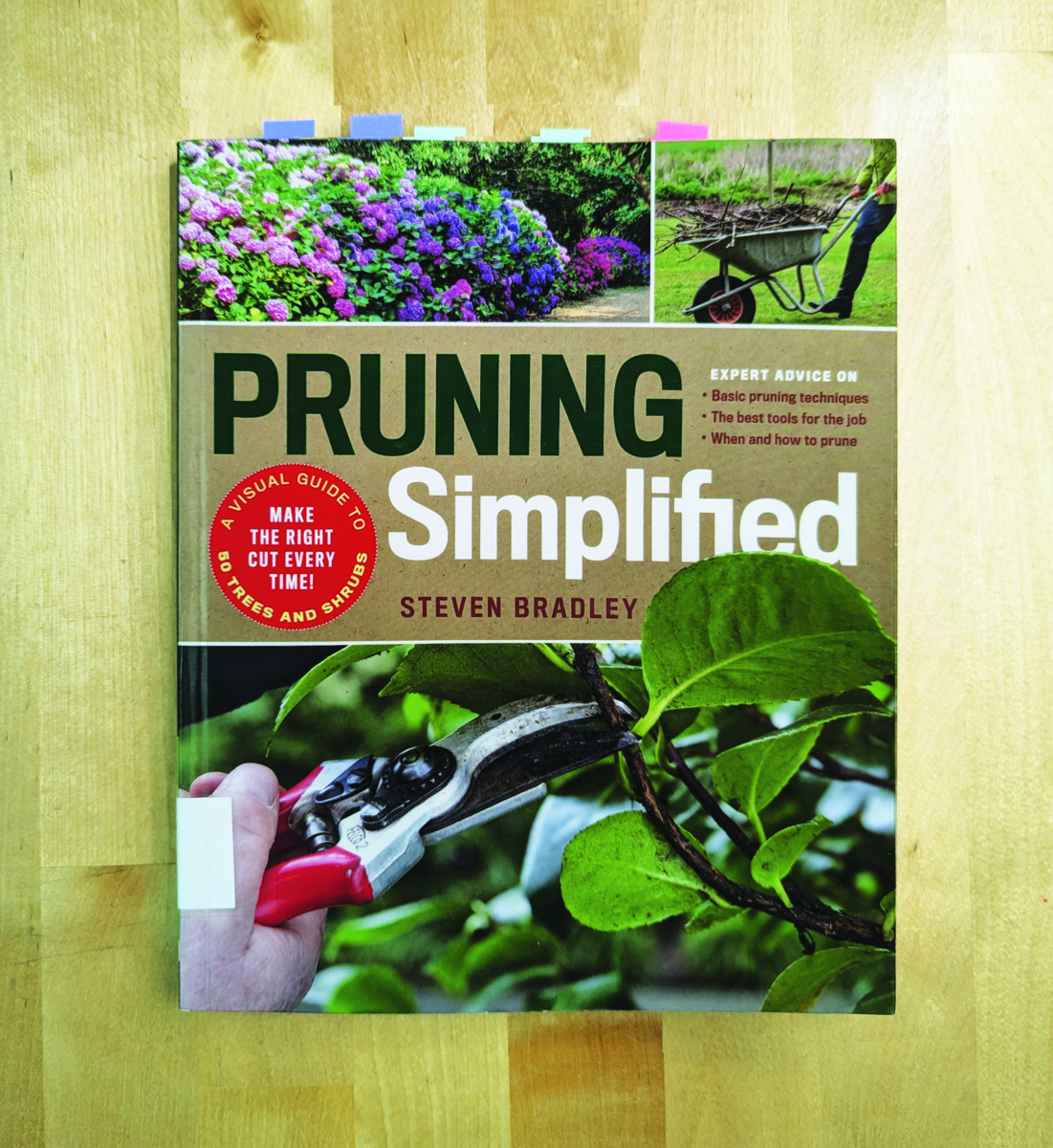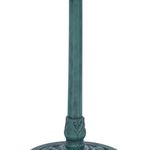Happy Monday GPODers!
Today Allyson Levy of Hortus Arboretum and Botanical Gardens in Stone Ridge, New York is reminding us to leave the leaves! Allyson has shared her knowledge, and the incredible plants her and her partner Scott Serrano grow on 21 acres several times last year: Growing Pawpaws, Special Fall Plants, Fall is for Purple. Each time she enlightens us to exquisite, and sometimes unusual, plants to grow as well as ways to support your local environment and wildlife with your garden.
To learn more about the incredible land they tend, and when you can visit, check out their website: hortusgardens.org
As co-director and co-founder of Hortus Arboretum and Botanical Gardens I am often asked about how we deal with winterizing the gardens which is no small task with over nine acres of cultivated gardens! However, for nonprofessionals, even those with small home gardens, chores can seem overwhelming and never-ending. However, now that we are well into December, there are some strategies that if you didn’t follow this season are worth incorporating and putting on your 2025 to-do list.
High on your list should be the mantra “leave the leaves”. This is a good one for sure, giving us gardeners the opportunity to do other tasks that maybe aren’t centered solely on plants. Now that the majority of deciduous tree leaves have fallen, except for the few marcescent Oak species and some Beech trees with leaves still clinging onto branches, reminders of the season that was. If this “leave the leaves” is a new phrase for you, or you just didn’t get around to taking out your leaf blower, or garden rake, rejoice, because the garden world has finally embraced this slogan since it is right in step with keeping a more naturalistic garden. For those of us who live in urban or suburban environments buying those tall brown “waste” bags to fill up with your lawn debris to leave on the sidewalk for pickup can now become a thing of the past. And even if you did tidy up your leaves this past fall it is a task that you can take off your 2025 list.
 The rationale behind this is simple. Fallen leaves break down over time and add nutrients to your plantings. Even different species of oak trees, notorious for keeping their leaves intact due to their high carbon to nitrogen levels, are still beneficial. Fallen leaves can trap snow, leading to additional moisture for both tree and perennial roots.
The rationale behind this is simple. Fallen leaves break down over time and add nutrients to your plantings. Even different species of oak trees, notorious for keeping their leaves intact due to their high carbon to nitrogen levels, are still beneficial. Fallen leaves can trap snow, leading to additional moisture for both tree and perennial roots.
 But what they don’t trap are early spring bulbs, which have no problem emerging from the soil despite a layering of leaves covering them. Snowdrops (Galanthus spp.), Crocus (Crocus spp.), and Daffodils (Narcissus spp.), along with a whole range of other early spring bulbs and ephemerals manage to push their way up through the leaf litter.
But what they don’t trap are early spring bulbs, which have no problem emerging from the soil despite a layering of leaves covering them. Snowdrops (Galanthus spp.), Crocus (Crocus spp.), and Daffodils (Narcissus spp.), along with a whole range of other early spring bulbs and ephemerals manage to push their way up through the leaf litter.
Even more importantly fallen leaves provide places for insects like moths, butterflies, wasps, and ground beetles to lay their eggs as well as well as a place to overwinter by offering protection from predators and the elements.
Then come early spring when you’re ready to “clean-up” you can easily address any big piles of leaves that haven’t completely broken down by lightly raking them apart so they are loosened up some but still kept in place. If you require a more tidy look you can gather them up to put into your compost, where the leaves can continue to break down over time. If you maintain a large garden, or if the leaves are all over the place you can run a mower over them and shred them up, essentially mulching them.
 Okay, so now you have one less chore to do. But what about all your spent stems and flower heads that are left in the garden? Can you leave those in place, too? Yes!! Seeds have many strategies for propagation, and wind is often one of the ways plants do this on their own. It is always smart to gather some of the seeds in fall to sow yourself, but because many native plants need to be cold-stratified in order to germinate, leaving seeds on the plant and letting Mother Nature do the job is one way to ensure future plants. Of course, wind doesn’t pay attention to your garden design and plants may grow far away from the original “mother” plant. Above, rabbitbrush (Chrysothamnus spp.) seeds in late fall get disbursed by the wind, but the seed heads remain.
Okay, so now you have one less chore to do. But what about all your spent stems and flower heads that are left in the garden? Can you leave those in place, too? Yes!! Seeds have many strategies for propagation, and wind is often one of the ways plants do this on their own. It is always smart to gather some of the seeds in fall to sow yourself, but because many native plants need to be cold-stratified in order to germinate, leaving seeds on the plant and letting Mother Nature do the job is one way to ensure future plants. Of course, wind doesn’t pay attention to your garden design and plants may grow far away from the original “mother” plant. Above, rabbitbrush (Chrysothamnus spp.) seeds in late fall get disbursed by the wind, but the seed heads remain.
 |
 |
Regardless, many flowering plants still retain the seed heads after the seeds have been strewn, and they can be often very decorative as well. Above is a Japanese Angelica (Aralia elata, Zones 4–9) seed head before and after its seeds have fallen.
 You can leave your helianthus, echinaceas, symphyotrichum, solidago, and pretty much any annuals, perennials, grasses, and fruiting branches in place especially those still holding onto persistent berries or seed heads. Birds will thank you for it, as will many species of wasps and other insects that use the hollow stems, think Joe Pye (Eutrochium purpureum, Zones 3–9) for egg-laying and/or overwintering in. The availability of “brown” plant material is one of the most important factors for encouraging an increase in the population of all sorts of insects including bees. Forget buying a “bee hotel” and let nature make them for you. Besides, there are many flowering plants that provide visual interest “off-season.” Above are viburnum berries for the birds.
You can leave your helianthus, echinaceas, symphyotrichum, solidago, and pretty much any annuals, perennials, grasses, and fruiting branches in place especially those still holding onto persistent berries or seed heads. Birds will thank you for it, as will many species of wasps and other insects that use the hollow stems, think Joe Pye (Eutrochium purpureum, Zones 3–9) for egg-laying and/or overwintering in. The availability of “brown” plant material is one of the most important factors for encouraging an increase in the population of all sorts of insects including bees. Forget buying a “bee hotel” and let nature make them for you. Besides, there are many flowering plants that provide visual interest “off-season.” Above are viburnum berries for the birds.
 Clematis seedheads are stunningly ornamental and may be even more visually interesting, or at the very least last a lot longer than the actual flowers. Virgin’s bower (Clematis virginiana, Zones 6–8) seed heads have just as much visual interest as their flowers.
Clematis seedheads are stunningly ornamental and may be even more visually interesting, or at the very least last a lot longer than the actual flowers. Virgin’s bower (Clematis virginiana, Zones 6–8) seed heads have just as much visual interest as their flowers.
 Late blooming perennials like the shade-loving Japanese anemone (Anemone hupehensis var. japonica, Zones 5–7) have seed heads that surprisingly persist through winter, with only a really strong wind blowing them apart!
Late blooming perennials like the shade-loving Japanese anemone (Anemone hupehensis var. japonica, Zones 5–7) have seed heads that surprisingly persist through winter, with only a really strong wind blowing them apart!
 And if you live in a place where it snows, any heavy dump will do the work of bringing down those leftover seed heads and stems for you. However that snow dump can be messy with some stems down, others bent over at weird angles, while some are left unperturbed. Does that mean you need to go out and tidy it up??
And if you live in a place where it snows, any heavy dump will do the work of bringing down those leftover seed heads and stems for you. However that snow dump can be messy with some stems down, others bent over at weird angles, while some are left unperturbed. Does that mean you need to go out and tidy it up??
 The answer is no. As with the leaves, leave the plant material alone. At least for now. Having stems of various heights with different diameters of stems encourages a wider diversity of nesting habitats for a larger amount of different insects including stem-boring moths, and cavity-nesting wasps. Any fallen-over stems provides protection for ground-dwelling bees too.
The answer is no. As with the leaves, leave the plant material alone. At least for now. Having stems of various heights with different diameters of stems encourages a wider diversity of nesting habitats for a larger amount of different insects including stem-boring moths, and cavity-nesting wasps. Any fallen-over stems provides protection for ground-dwelling bees too.
Come March or April, depending on where you live, you have plenty of time to clean up and tidy if that’s your thing. However, there is something you can do that is even more beneficial, which is to assist the whole process come spring by breaking up both the standing and fallen stems either by hand or lopper and leaving the now brown material alone. Think of this chop and drop as a mulch for your soon-to-be emerging spring plants. They will have no problem growing up through the plant debris, and come late spring, you won’t even see that. Plus any insect that is still residing in the dead plant material, or any of their eggs essentially stays in place.
You may even begin to do what I have started to do, which is during the season using this chop and drop method when I am pruning or cleaning up a plant; I will cut the branches, stems, etc., into smaller pieces and throw them down around the base of the plant, allowing the material to break down in place. No need to drag a wheelbarrow or tarp to your compost for this. Just let the material break down in place.
 So, of course, leaving the leaves, not cutting back flowers, or gathering up all the seed heads (like the remaining seed heads of this northern sea oats [Chasmanthium latifolium, Zones 5–9]) just saved me several days of work because with managing the end-of-the-season duties at the arboretum there’s still much to be done. More on that soon!
So, of course, leaving the leaves, not cutting back flowers, or gathering up all the seed heads (like the remaining seed heads of this northern sea oats [Chasmanthium latifolium, Zones 5–9]) just saved me several days of work because with managing the end-of-the-season duties at the arboretum there’s still much to be done. More on that soon!
Thank you for sharing more inspiration and information from Hortus, Allyson! You continue to encourage us to look at gardening from a perspective beyond just the beauty that we create. A trip to your amazing arboretum and botanical garden is definitely on my agenda for spring.
Have a garden you’d like to share?
Have photos to share? We’d love to see your garden, a particular collection of plants you love, or a wonderful garden you had the chance to visit!
To submit, send 5-10 photos to [email protected] along with some information about the plants in the pictures and where you took the photos. We’d love to hear where you are located, how long you’ve been gardening, successes you are proud of, failures you learned from, hopes for the future, favorite plants, or funny stories from your garden.
Have a mobile phone? Tag your photos on Facebook, Instagram or Twitter with #FineGardening!
Do you receive the GPOD by email yet? Sign up here.
Fine Gardening Recommended Products

Bird Houses for Outside Clearance with Copper Guard, Cedar Bird House Outdoor, Bluebird Finch Swallow Wren Chickadee
Fine Gardening receives a commission for items purchased through links on this site, including Amazon Associates and other affiliate advertising programs.
1-1/2″ ENTRANCE HOLE SIZE: SISTERBIRD bluebird houses for outside have a properly-sized entrance hole, through this blue bird houses for outside you can attract desirable species to your bluebird house, such as Bluebird, Wren, Tree Swallow, Chickadees, etc. While this blue bird house excluding predators and unwanted occupants, for example, European starlings. HIGH-QUALITY MATERIALS: SISTERBIRD birdhouse kits for kids and adults use untreated, unpainted cedar. bluebird nesting box has a rough surface, and birdhouses for outdoors can give birds a foothold as they enter and exit the cedar bluebird house. Cedar of birdhouses for outdoors clearance also can keep out weather-related damage. SAFE HOME FOR FLEDGLINGS: SISTERBIRD Bluebird BirdHouse Box with copper predator guard around the entrance hole can help young birds against predators. These birdhouses for outdoors interior grooves, like a small ladder, help young birds leave the cedar bird houses for outside, especially swallows and bluebirds. A great birdhouses for outside clearance for creating a trail. EASY AND FUN TO ASSEMBLE: Just use a screwdriver, you can experience the thrill of working with your family to build blue bird houses, and feel the pride that comes from building a bird nesting box for little birds. You can also DIY, paint it, making blue bird box special and unique, build your own blue bird houses for outdoors. EASY TO CLEAN & REUSABLE: SISTERBIRD wooden bird houses front door opens for easy cleaning after fledglings have left. When the season is over, clean out the blue bird boxes for outside and save bluebird birdhouses for outdoors clearance for next spring.

Pruning Simplified: A Step-by-Step Guide to 50 Popular Trees and Shrubs
Fine Gardening receives a commission for items purchased through links on this site, including Amazon Associates and other affiliate advertising programs.
Pruning Simplified shows you exactly how to do it. This must-have guide offers expert advice on the best tools for the job, specific details on when to prune, and clear instructions on how to prune. Profiles of the 50 most popular trees and shrubs—including azaleas, camellias, clematis, hydrangeas, and more—include illustrated, easy-to-follow instructions that will ensure you make the right cut the first time.

Alpine Corporation 28″ Tall Outdoor Birdbath with Scrollwork Decoration Yard Statue
Fine Gardening receives a commission for items purchased through links on this site, including Amazon Associates and other affiliate advertising programs.
STUNNING BIRDBATH: Quality birdbath is sure to attract feathered friends and create a charismatic ambiance for your garden, patio, deck, yard, or other outdoor space. SHALLOW SHAPE: Shallow and wide bowl assures that multiple small birds can drink and bathe safely at the same time
BEAUTIFUL DESIGN: Luxurious and antique styling adds a touch of elegance to your garden or yard. DURABLE CONSTRUCTION: Polypropylene material resists rust and damage from the elements while the sturdy base prevents the birdbath from tipping over. IDEAL SIZE: Birdbath measures 20″ L x 20″W x 28″H, the perfect size for your yard, and includes a one-year manufacturer’s warranty from date of purchase.

